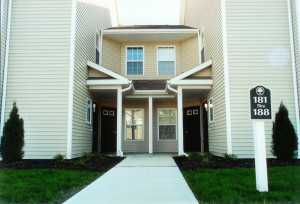 The US News and World Report online provides a dynamic breakdown of the basic components of the federally-backed loan modification program.
The US News and World Report online provides a dynamic breakdown of the basic components of the federally-backed loan modification program.
According to the article, here are “Seven things you need to know” about a loan modification:
1. The plan focuses on payments made to lenders rather than the price of the loan. Experts believe that even if the value of the home possesses little or no equity, if the modified loan payment is affordable, the homeowner will continue making payments.
2. The plan would seek to reduce the mortgage payment to 31 percent of the borrower’s gross monthly income. “To that end, the administration’s plan requires participating loan servicers to reduce monthly payments to no more than 38 percent of the borrower’s gross monthly income. The government would then chip in to bring payments down further, to no more than 31 percent of the borrower’s monthly income. In lowering the payment, the servicer would first reduce the interest rate to as low as 2 percent. If that’s not enough to hit the 31 percent threshold, they would then extend the terms of the loan to up to 40 years. If that’s still not enough, the servicer would forebear loan principal at no interest.”
3. The plan would then encourage loan servicer participation by providing cash incentives: “To encourage participation, servicers will be paid $1,000 for each modification and will get an additional $1,000 payout each year for as many as three years, as long as the borrower continues making payments. Borrowers, meanwhile, can get up to $1,000 knocked off the principal of their loan each year for as many as five years if they make their payments on time. Neither party can receive the cash incentives until the modified loan payments have been made for at least three months.”
4. The plan would only apply to those under financial hardship. Only owner-occupied residences with an outstanding balance of $729,750 or lower would be eligible. (Sorry, no speculators.)
5. The plan will require the loan modification to meet the net present value test. What this means is that the lenders would compare the expected cash flow of the proposed modified loan with the expected cash flow of the loan unmodified. If the modified loan would create more cash flow, then the loan will be modified and or restructured.
6. The plan will offer loan servicers with incentives to extinguish second lienslike home equity lines of credit.
7. The plan may or may not work. (Not the most satisfying conclusion, I know).
 Please refer to the full US News and World Report article by Luke Mullins here.
Please refer to the full US News and World Report article by Luke Mullins here.


 The
The Please refer to the full US News and World Report article by Luke Mullins
Please refer to the full US News and World Report article by Luke Mullins  Tacoma’s City Council wants to modify the current zoning law to attract new business to many of Tacoma’s neighborhoods. The Council hopes to make Tacoma more attractive by easing height and building limitations.
Tacoma’s City Council wants to modify the current zoning law to attract new business to many of Tacoma’s neighborhoods. The Council hopes to make Tacoma more attractive by easing height and building limitations. Wendy Koch, a fellow associate at Dickson Steinacker, provided the following authority regarding just that issue:
Wendy Koch, a fellow associate at Dickson Steinacker, provided the following authority regarding just that issue: According to
According to 